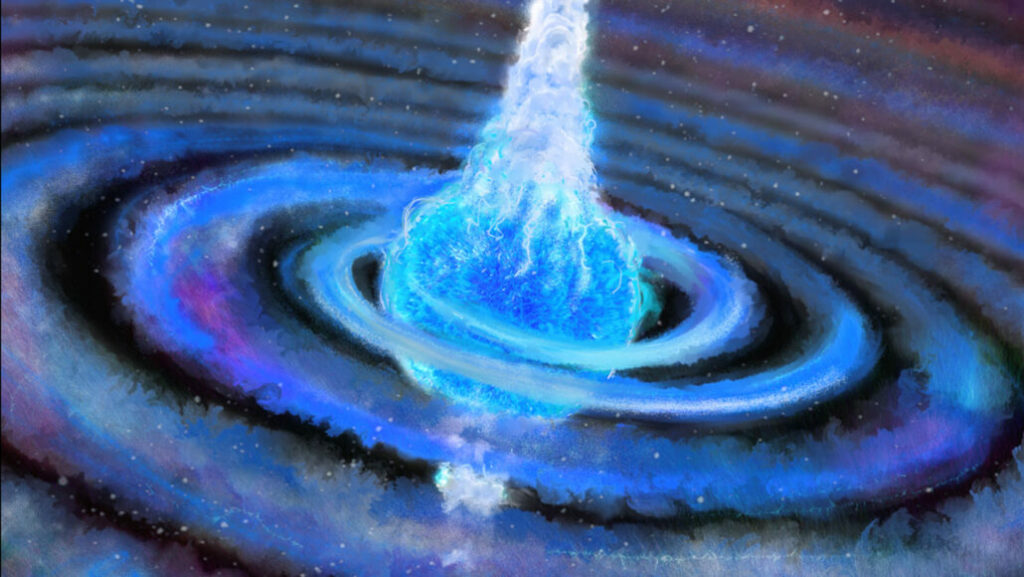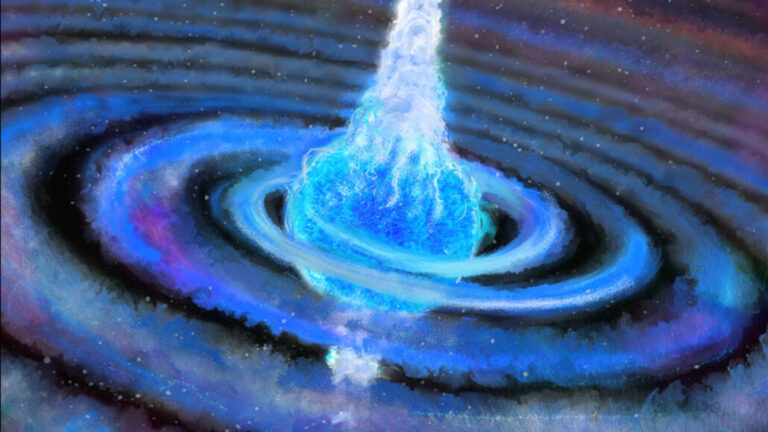Astronomers may have seen a star gulp down a black hole and explode
It’s the first firm evidence of a rare cosmic phenomenon
Astronomers have for the first time obtained convincing proof of a rare double cosmic cannibalism, in which a star swallows a dense object like a black hole or neutron star. The star’s core was then consumed by that item, causing the star to explode and leaving only a black hole in its wake.
The Very Large Array (VLA), a radio telescope made up of 27 large dishes in the New Mexican desert close to Socorro, provided the first indications of the horrifying event, which was detailed in the Sept. 3 Science. A blast of radio radiation as brilliant as the brightest exploding star, or supernova, as seen from Earth happened in a dwarf star-forming galaxy some 500 million light-years away during the observatory’s surveys of the night sky in 2017.
According to Caltech astronomer Dillon Dong, “We thought, ‘Whoa, this is fascinating.
Using the VLA and a telescope at the W.M. Keck Observatory in Hawaii that sees in the same optical light as human eyes, he and his colleagues continued their surveys of the galaxy. The Keck telescope observed an intense explosion there previously as a bright outflow of material spewed in all directions at 3.2 million kilometers per hour from a central place.
The scientists then discovered a very strong X-ray source in historical data from the Japanese telescope Monitor of All Sky X-ray Image (MAXI), which is located on the International Space Station. Although it occurred in the same region as the radio burst, this X-ray burst was first noticed in 2014.

CHUCK CARTER
Putting the facts together, Dong and his coworkers believe that the following took place: A long time ago, two stars were created in an orbital binary system; one of the stars died in a magnificent supernova and either became a neutron star or a black hole. In fact, the dead star actually penetrated the outer layers of its bigger stellar brother as gravity drew the two bodies closer together.
For hundreds of years, the little object spun into the star that was still alive until ultimately reaching and devouring the core of its partner. The bigger star released enormous amounts of gas and dust at this period, creating a material shell surrounding the pair.
Gravitational forces and intricate magnetic interactions from the dead star’s eating caused the larger star to explode in addition to launching massive jets of energy that were detected in 2014 as an X-ray explosion in the core of the surviving star. The optical and radio light was produced as the detonation’s debris slammed into the surrounding shell of material at incredible speed.
Although this appears to be the first firsthand discovery of a phenomena known as a merger-triggered core collapse supernova, Dong notes that theorists have previously imagined such a situation.
A Princeton University astronomer who was not involved in the new study, Adam Burrows, says “They’ve done some pretty nice detective work with these findings.” According to him, the discoveries should help put limits on the timing of a process known as common envelope evolution, in which one star is engulfed by another. These phases of a star’s life are challenging to see and model because they are very brief in cosmic time. A white dwarf, neutron star, or black hole are examples of two compact objects that circle one another when an enveloping partner dies most of the time before its core is eaten.
Dong claims that while measuring the ripples in spacetime, observatories like the Advanced Laser Interferometer Gravitational-Wave Observatory, or LIGO, find the culmination of these systems. He anticipates that now that astronomers are aware to seek for these several lines of evidence, they will uncover more instances of this peculiar event.
Source:ScienceNews
Do not forget to share your opinion with us to provide you with the best posts !





0 Comments